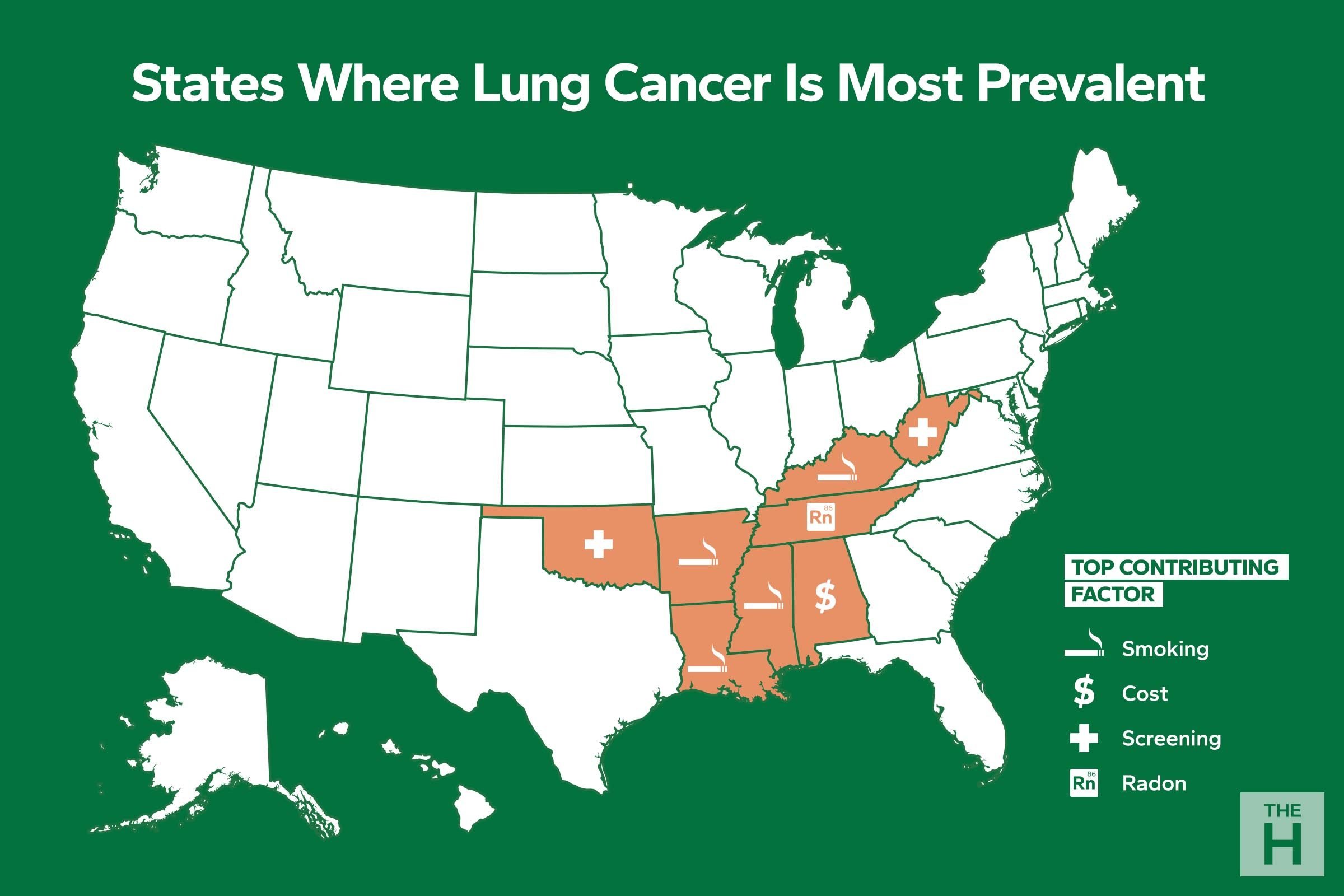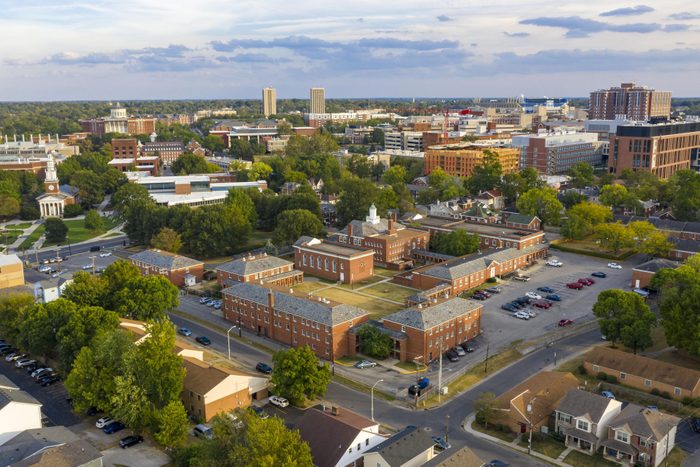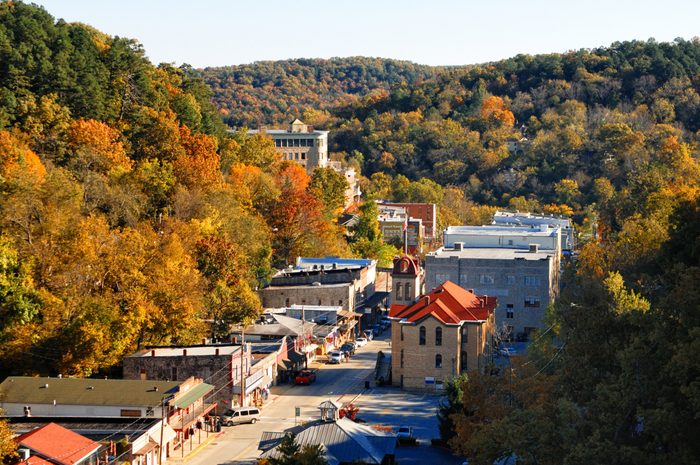
The American Lung Cancer Association’s 2022 State of Lung Cancer report brings with it good news, mixed news and news we hope will improve.
While five-year survival rates for the disease are up to 25% (from 18% in 2018 and 23.7% last year), lung cancer stubbornly remains the leading cause of cancer deaths at the national level. But within states, statistics vary dramatically on survival, new cases, screening and more.
Why is this? Says Zach Jump, national senior director of epidemiology and statistics at the American Lung Association: “There are definitely some large healthcare and societal issues at play.” These include smoking rates—‚but not only smoking rates. Other factors that cause comparably higher rates of lung cancer include exposure to radon and air pollution, along with how many people are getting screened and whether cancers are being caught early.
Here are the states that rank highest in new cases and lowest in survival.

Kentucky
The states with the highest number of new lung cancer cases are clustered in the coal-mining and tobacco-growing regions of the country. Kentucky leads the pack with the highest number of new cases—87.6 per 100,000, versus a national average of 56.7—and almost 2.3 times the incidence rate in Utah, which had the fewest cases.
Smoking rates are the most likely culprit, as they are in most states where lung cancer rates are high. With 21.4% of its population still puffing, Kentucky has the second highest smoking rate in the nation. “Smoking is the number one driver of lung cancer,” says Jump. “There’s a really, really strong correlation between rates of smoking and rate of new cases.”
Kentucky also trails in lung cancer survival rates. At 20.4%, it is 42nd out of 46 entries. At the other end of the spectrum, Utah boasts the lowest number of new cases (only 26.6 per 100,000) and the best survival (30.8%).

West Virginia
The historical coal-mining state of West Virginia ranks second worst in the nation for number of new lung cancer cases: 78.3 per 100,000. Predictably, many of its residents (22.6%) smoke (though fewer than in the past, as is the case in many states, according to ALA numbers) and it shares space with Kentucky and Mississippi as number 42 out of 46 with a survival rate of only 20.4%.
Perhaps not surprisingly, the Mountain States, has much lower screening rates than the national average. Even though lung cancer screening recommendations were updated in 2021, only 5.8% of the eligible population nationally take advantage. “One of the unique things about the lungs is they don’t have pain receptors,” explains Jump. That means most people don’t know they have cancer until they have symptoms, which is usually too late for effective treatment. Overall in the nation, about 60% of lung cancers aren’t diagnosed until the tumor has spread, says Jump.
Lung cancer screenings matters
The U.S. Preventive Services Task Force expanded its screening recommendations in 2021 to include people aged 50-80 who have 20 or more pack years (that’s one pack a day for 20 years or two packs a day for 10 years etc) and who either still smoke or quit within the last 15 years.
“There’s no magic switch to reduce smoking rates overnight but what we do have is screening,” says Jump. “When we catch these tumors early and just cut them out, people can enjoy the rest of their lives. That’s one of the reasons we push screening so hard.”

Arkansas
Arkansas ranks just below Kentucky and West Virginia with 75.8 new lung cases per 100,000. Again, this correlates with many people smoking—20.5% of Arkansasians, the third highest rate in the nation. Arkansas also occupies the bottom rungs when it comes to survival rates, early diagnosis and number of people getting surgical treatment.
In Arkansas, the report notes, Black Americans were 15% less likely to be diagnosed early, 19% less likely to receive surgery, 10% more likely to not get any treatment at all and, overall, 12% less likely than white Americans to live five years beyond their diagnosis. In general across the nation, says Jump, “Racial disparities persist with people of color less likely to be diagnosed early, when cancer is most treatable, less likely to get surgery and less likely to survive than white Americans.”

Tennessee
Tennessee joins many of its neighbors with higher-than-average new cases: 73.3 per every 100,000 residents. It barely escapes the bottom rung in survival, however, ranking only “below average.”
With roughly a quarter of lung cancer cases detected early, it qualifies as “average in this category and ranks towards the middle in terms of screening rates. Homes in Tennessee have an above-average rate of radon, a gas which also for many cases of lung cancer. Radon is insidious because it has no taste, color or odor, although easily installed detectors can tell you if your home has it.

Mississippi
Mississippi joins the ranks of states with the worst lung-cancer survival rates in the nation, 20.4% (tied with Kentucky and West Virginia). The state also rests in the bottom tier when it comes to surgical treatment. According to the Lung Association Report, reasons for this could include patients who aren’t healthy enough to have an operation or whose cancer has spread.
Some of this likely reflects the 20.1% smoking rate in Mississippi. Smoking cessation programs can help people quit, says Jump. The American Lung Association has programs. There are also medications which can help.

Oklahoma
Oklahoma’s five-year survival rate of 19.7% is the worst in the nation, far below Rhode Island, the number one contender, where 30.8% of lung cancer patients are still alive after five years.
Oklahoma also has low rates of early diagnosis and surgical treatment, which could help explain the survival numbers. According to the new report, lung cancers detected at an early stage have a 61% five-year survival rate. Most cases (44%) are not caught until they have spread, leaving a survival rate of only 7%.

Alabama
Alabama’s survival rate rose enough this year to pull it out of the last-ranked spot, though now only one position higher. Smoking rates are high at 18.5% of the population, clearly a major factor in the scoring. According to the Alabama Department of Public Health, 90% of lung cancer deaths in the U.S. are caused by smoking.
In 2022, Alabama is one of the few states (with Arkansas and Alaska) where Medicaid fee-for-service plans do not cover lung cancer screening. Alabama also scored below average in early diagnosis and by the number of people getting surgical treatment, which has the potential to cure cancer. Last year, Black Alabamans were the least likely in the nation to receive surgery for lung cancer.

Louisiana
Another state with multiple low rankings, Louisiana is 41 out of 46 in survival and has a higher-than-average number of new cases.
According to a report from The University of California San Francisco, Louisiana’s tobacco industry has a strong history of successful lobbying. Taxes on cigarettes in the state are below average, per Tobacco Free Kids. Increased cigarette taxes along with smoke-free air laws do contribute to lower rates of smoking and lung cancer, says Jump. In Louisiana, 18.3% of citizens smoke.
In general, state funding contributes to lower smoking rates, says Jump.
For more wellness updates, follow The Healthy on Facebook, Instagram, and Twitter. Keep reading:
